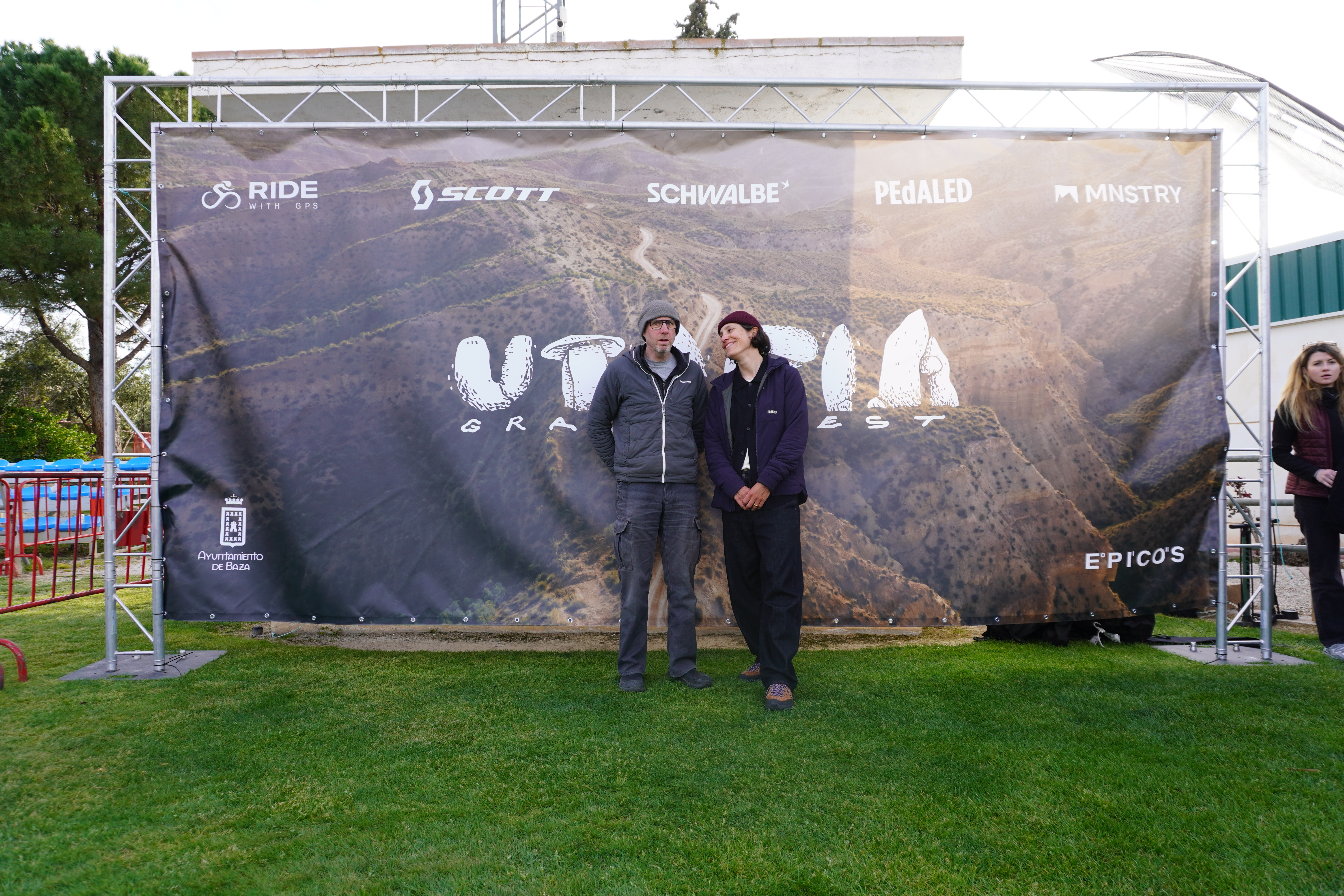How Many Bike or Running Ultra Races Should I do Each Year?

The Art of Race Selection
When it comes to planning a successful ultra-endurance racing season, one of the biggest mistakes athletes make is racing too frequently without a strategic approach. The old adage "quality over quantity" couldn't be more relevant in race planning. This week, I'd like to share an approach that has transformed how many elite ultra-endurance athletes plan their seasons, both in ultra running and ultra cycling, with a specific focus on Quinda Verheul's 2025 bikepacking campaign.
The Triple Crown Approach
Quinda Verheul has built her 2025 season around three carefully selected "A" races, strategically spaced throughout the year:
- The Tour Divide (June 13, 2025): 2,745 miles from Canada to Mexico along the Continental Divide
- The Colorado Trail (August 10, 2025): 500+ miles of high-altitude mountain biking across the Rockies
- Arizona Trail 750 (October 16, 2025): 750 miles traversing Arizona's diverse terrain
This calendar wasn't built around a rigid 12-week formula, but rather with careful consideration of each event's demands and the recovery needed between them. There's approximately 8 weeks between the Tour Divide and Colorado Trail, and about 10 weeks between the Colorado Trail and Arizona Trail 750. Finding races exactly 12 weeks apart is nearly impossible. What matters is ensuring sufficient recovery and adaptation time between each major effort.
Building on Previous Races
What makes this approach particularly effective for ultra-endurance events is that much of the fitness gained from one race directly contributes to the next. After completing the Tour Divide in June, an athlete won't be starting from scratch for the Colorado Trail in August.
The fitness built during the Tour Divide becomes the foundation for the Colorado Trail. After a multi-week event like the Tour Divide, the priority isn't rebuilding fitness from zero—it's recovering properly so the body can adapt and absorb those training gains while maintaining the endurance base that's been established.
This cascading fitness concept is central to successful ultra-endurance planning, whether for runners or cyclists. Rather than viewing each race as an isolated peak requiring a complete buildup, experienced athletes see their season as a progressive journey where each event builds upon the last, with strategic recovery periods in between.
The ABC Race Classification System
The ABC race classification system is widely used by coaches and training platforms like TrainingPeaks to help athletes structure their racing calendars effectively:
A Races: The Main Events (2-3 per year)
These are your priority races—the ones where you want to perform at your absolute best. For Quinda, these are the three epic bikepacking events mentioned above. For ultra runners, these might be major 100-milers or stage races. Everything in your training calendar revolves around peaking for these events. Key characteristics include:
- Full preparation periods tailored to the event demands
- Peak fitness timing
- Equipment testing completed and dialed in
- Nutrition and recovery plans optimized
- Mental preparation focused
- Strategic race planning down to the smallest detail
B Races: The Performance Indicators (3-5 per year)
B races serve as stepping stones toward your A races. They provide valuable feedback on your fitness and equipment while contributing to your overall development.
In Quinda's case, as an experienced and successful bikepacker, her B events focus on improving specific aspects of performance rather than testing basic capabilities. She includes long rides, some shorter races and back-to-back weekend efforts to help improve her average speed over multi-day events, as this is more relevant to her performance goals than simply establishing whether she can ride day after day.
B races typically feature:
- Shorter durations than A events
- Tactical goals beyond just finishing time
- Opportunity to assess recovery
- Equipment testing in varying conditions
- Minimal disruption to the overall training plan
C Races: The Fun Rides and Runs
These are the events you do for enjoyment, social connection, or to support your community—without disrupting your training or recovery. Examples include:
- Local cycling club events or trail running races
- Charity rides or runs
- Community events
- Group adventures with training partners
For C events, consider following these guidelines:
- No specific preparation
- Treat as a "training session in race conditions"
- No specific time goals or pressure
- Opportunity to enjoy the social aspects of the sport
- No compromise on recovery from A races
C events help keep us connected to why we love cycling or running in the first place. They're mentally refreshing and remind us that not every event has to be about performance.
Season-Long Training Approach
Unlike shorter endurance events where athletes might follow a rigid 12-week buildup to each race, ultra-endurance events (both running and cycling) require a more holistic, season-long approach. For something like the Tour Divide or a series of 100-mile trail races, a 12-week buildup would be insufficient for most athletes. Many require a solid 5-6 month foundation.
The specific approach to season-long training varies significantly between athletes based on their individual strengths, weaknesses, and experience levels. However, a general progression might look something like this:
Early Season: Foundation Building
- Gradually increasing volume
- Strength training focus
- Technical skills development (trail skills for runners, bike handling for cyclists)
- Equipment research and testing
- Mental preparation and visualization
Mid-Season: Building Race-Specific Fitness
- VO2 max training blocks
- Threshold development (Functional Threshold Power/Pace/Lactate Threshold)
- Long back-to-back endurance days
- Event-specific training (overnight trips for bikepackers, altitude training for mountain events)
- Nutrition strategy refinement
Pre-Race: Final Preparation
- Terrain-specific training
- Systems finalization
- Logistics and support coordination
- Tapering and mental preparation
The Recovery-First Approach Between Events
After completing an ultra-endurance event like the Tour Divide or a 100-mile mountain race, the primary focus shifts to recovery rather than immediately jumping back into intense training. This recovery-first approach is critical for ultra-endurance athletes in both cycling and running disciplines.
The most effective approach to recovery is highly individualized. Rather than following rigid timelines, experienced athletes listen to their bodies and wait until they're truly ready to resume structured training. Some may recover faster than others, and the same athlete might require different recovery periods following different events.
Recovery should be prioritized because:
- Ultra-endurance events create massive physiological and psychological stress
- The training effect from the event itself is enormous
- Premature return to training can compromise adaptation, lead to injury and over-training
- Mental recovery is just as important as physical recovery
Adaptation vs. Building Fitness
One of the key insights from experienced ultra-endurance athletes is understanding the difference between building fitness from scratch and adapting existing fitness to new challenges.
After completing the Tour Divide, an athlete doesn't need to rebuild their endurance base for the Colorado Trail. Similarly, an ultra runner who completes a mountain 100-miler doesn't need to rebuild their aerobic base for their next major race. Instead, they need to adapt their existing fitness to the specific demands of their next challenge.
This distinction shapes how athletes approach the periods between A races:
- Post-first event: Focus on recovery, then adaptation to the specific demands of the second event
- Post-second event: Recovery, then adaptation to the unique challenges of the final event
Finding the Right Balance for You
While a three A-race approach works wonderfully for some athletes and their goals, you might find that one or two major events per year is your ideal number, whether you're an ultra runner or ultra cyclist. The key principles remain:
- Allow adequate recovery between major efforts (ultra-endurance events require significant time)
- Create purpose for each event in your calendar
- Be honest about classification (not every race can be an A race)
- Build upon the fitness gained in previous events
Conclusion
Strategic race planning centered around well-spaced A races has transformed how many ultra-endurance athletes approach their seasons, in both running and cycling disciplines. By focusing on just three key events with proper spacing between them, athletes allow their bodies to fully absorb the tremendous fitness gains from each ultra-endurance challenge rather than constantly disrupting the adaptation process with too many races.
This approach recognizes a fundamental truth of ultra-endurance sports: the races themselves are often your best training. The Tour Divide or a mountain 100-miler will provide a fitness stimulus that no training program could ever replicate, and with proper recovery, that fitness carries forward to subsequent events.
As you plan your next season, consider adopting this ABC classification system and the recovery-first mindset between major events. You might be surprised how focusing on fewer key events with strategic spacing can lead to better performances and more enjoyment of the sport, whether you're covering the distance on two wheels or two feet.
What's your approach to planning an ultra-endurance season? Have you found success with focusing on fewer key events and prioritizing recovery between them? Share your experiences in the comments below!
Subscribe to our blog
Please share with your friends
Other articles you might like
May 16, 2025


Comments